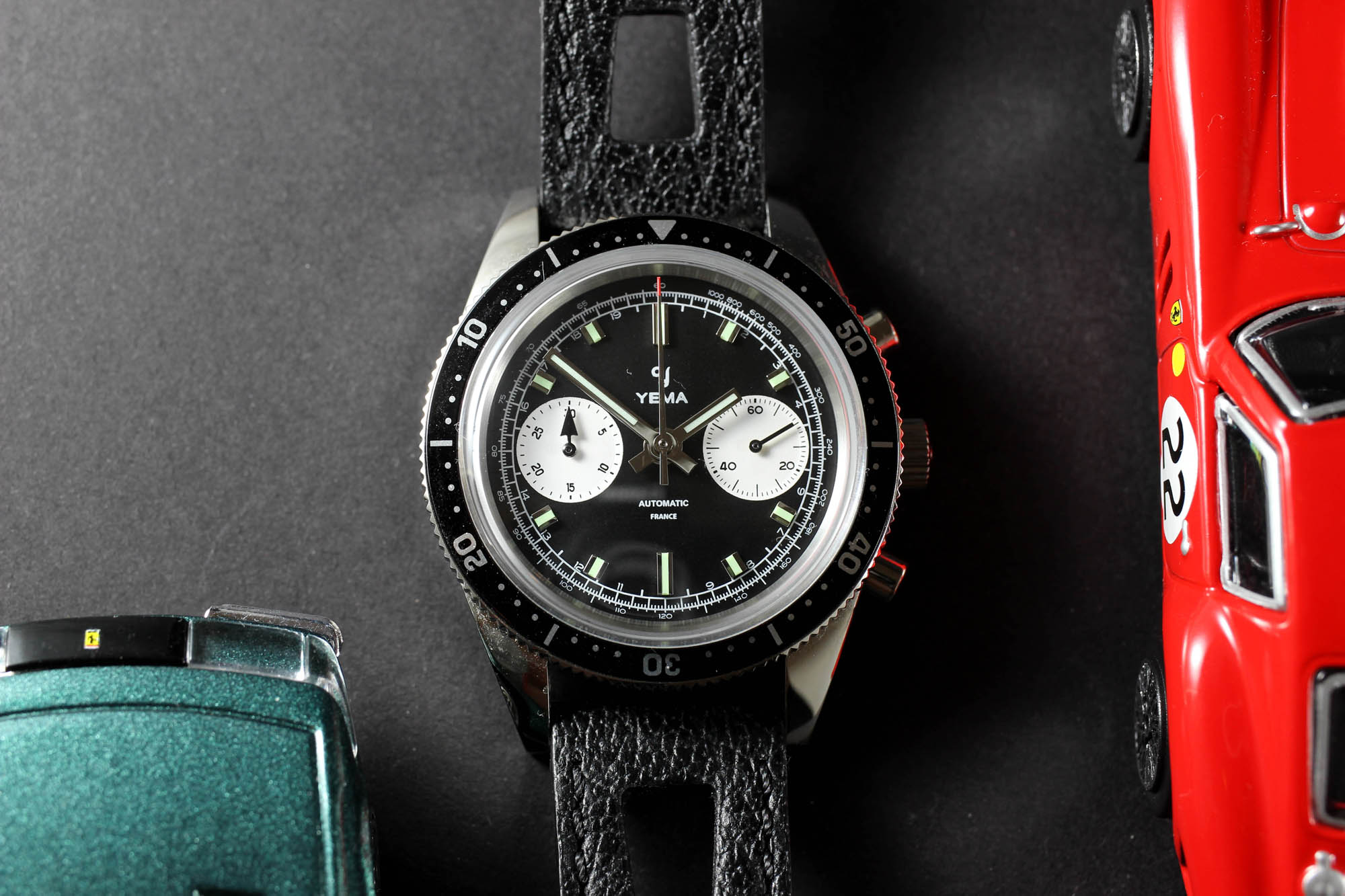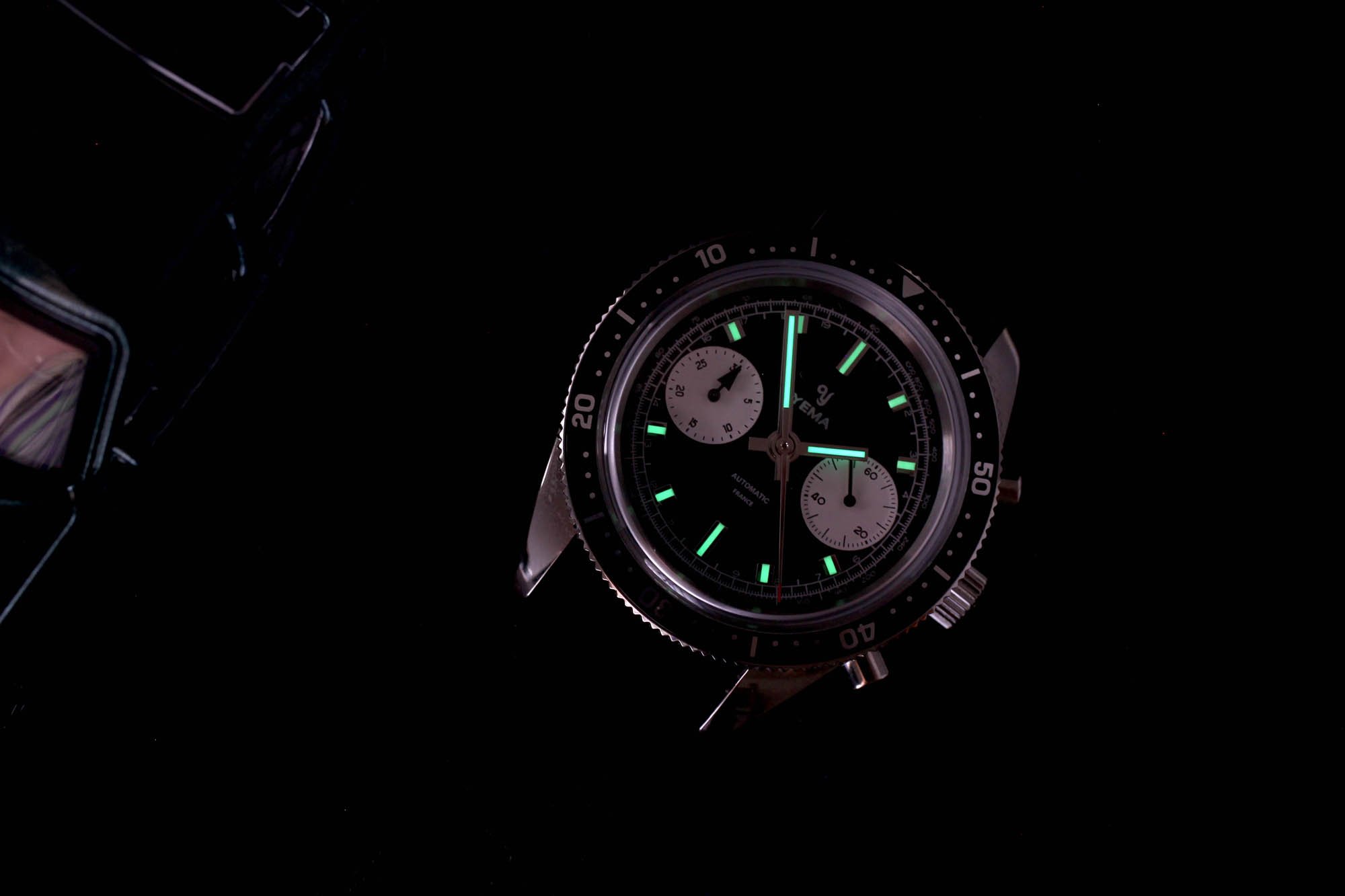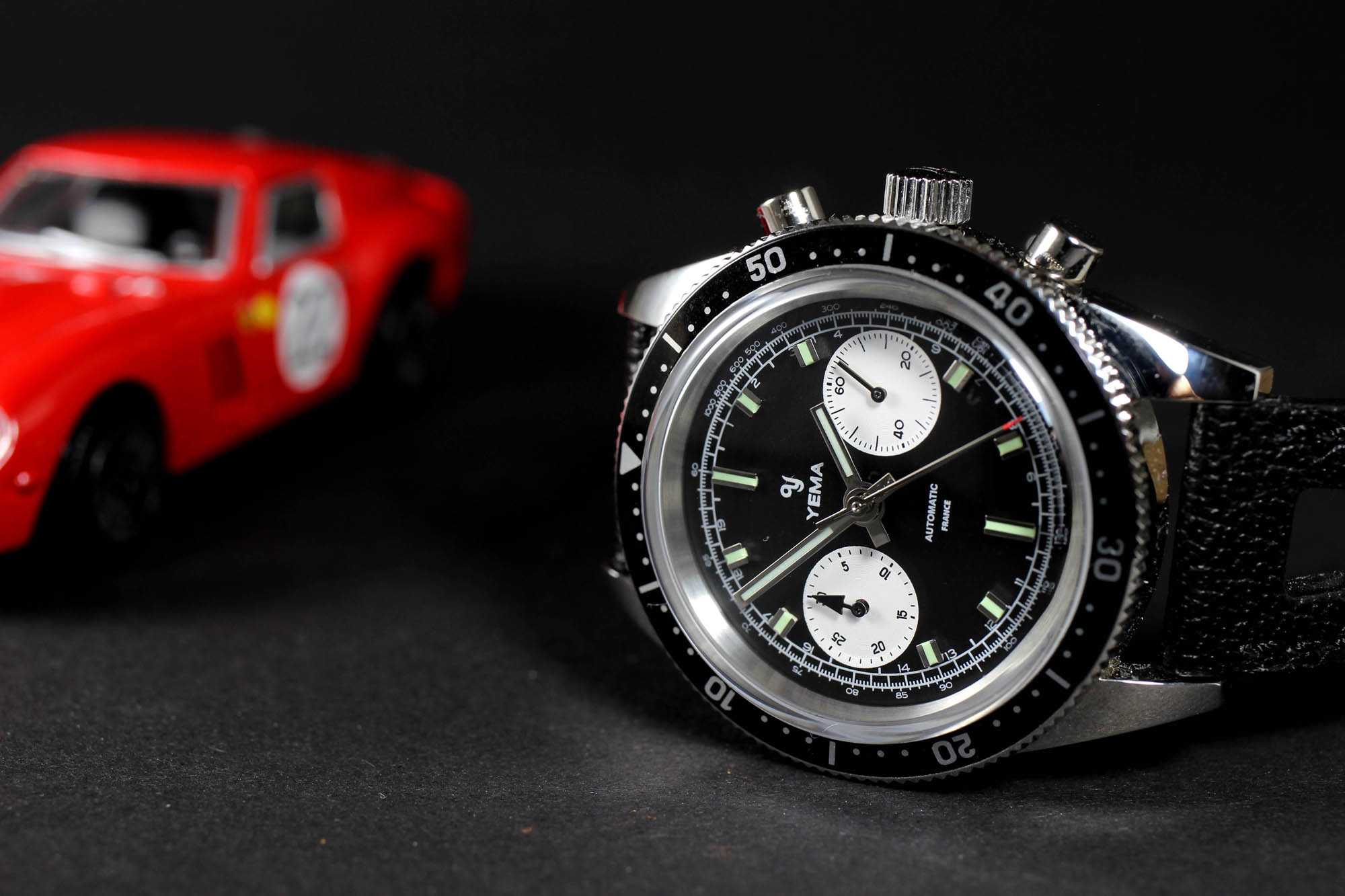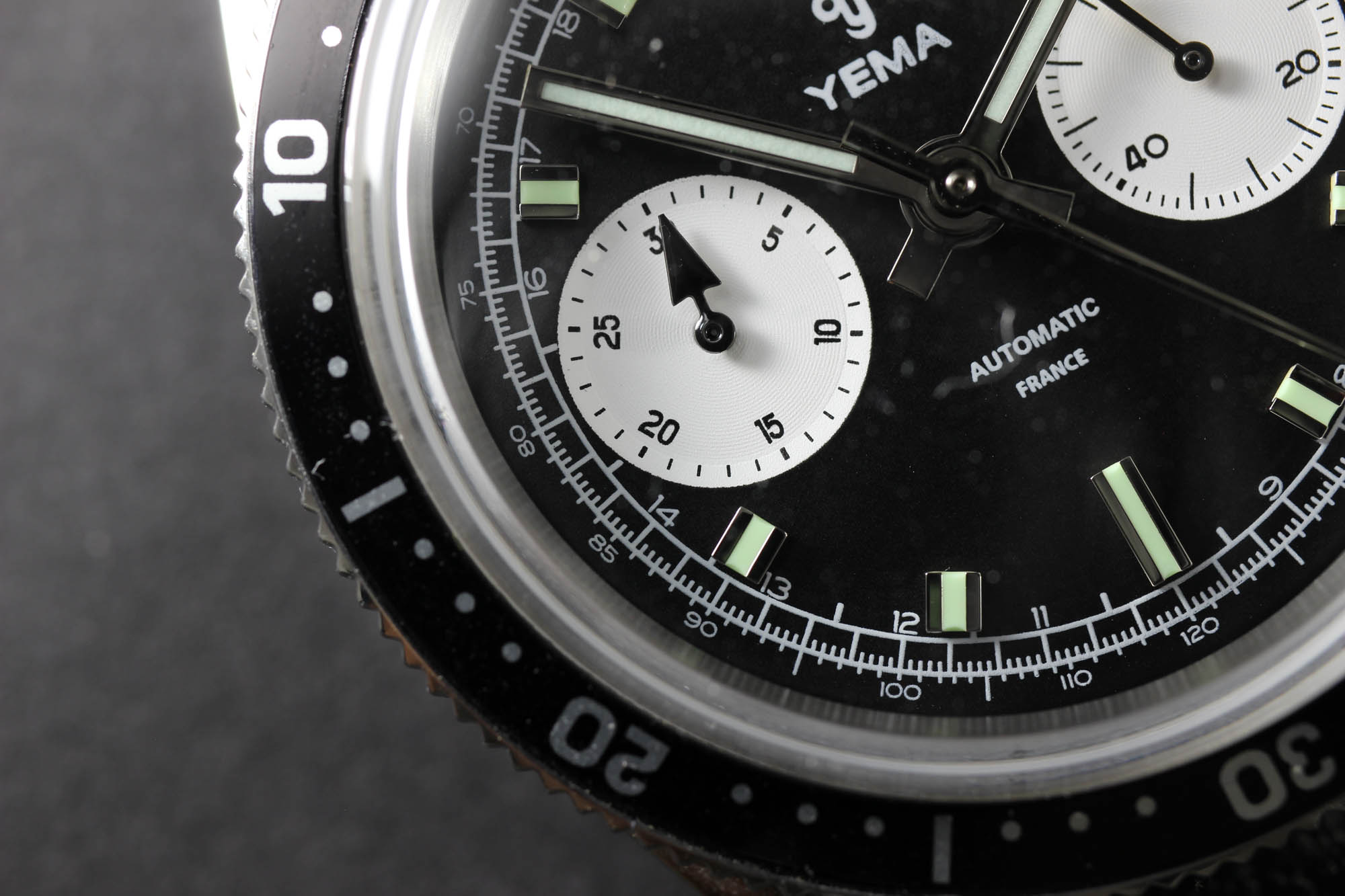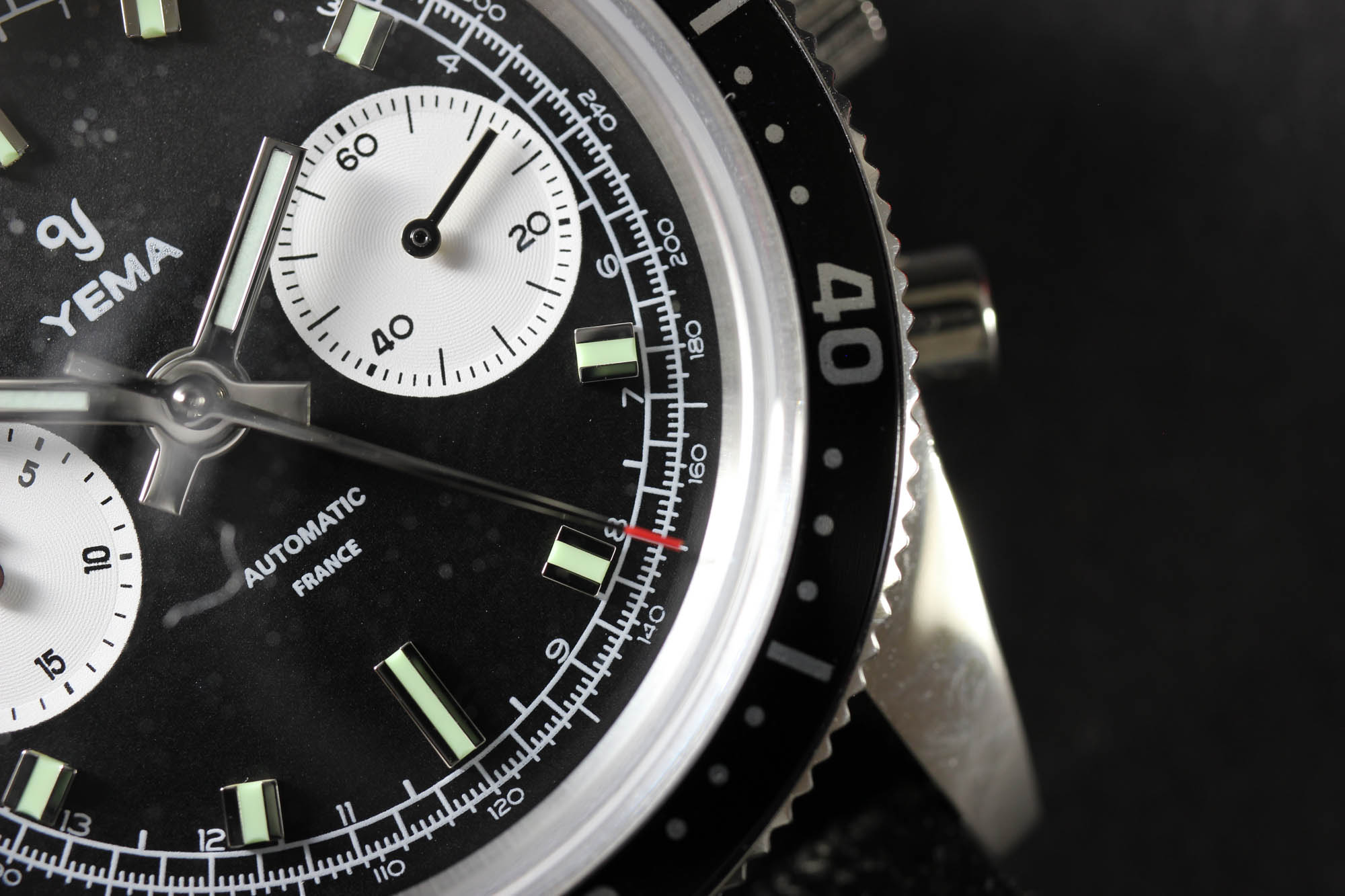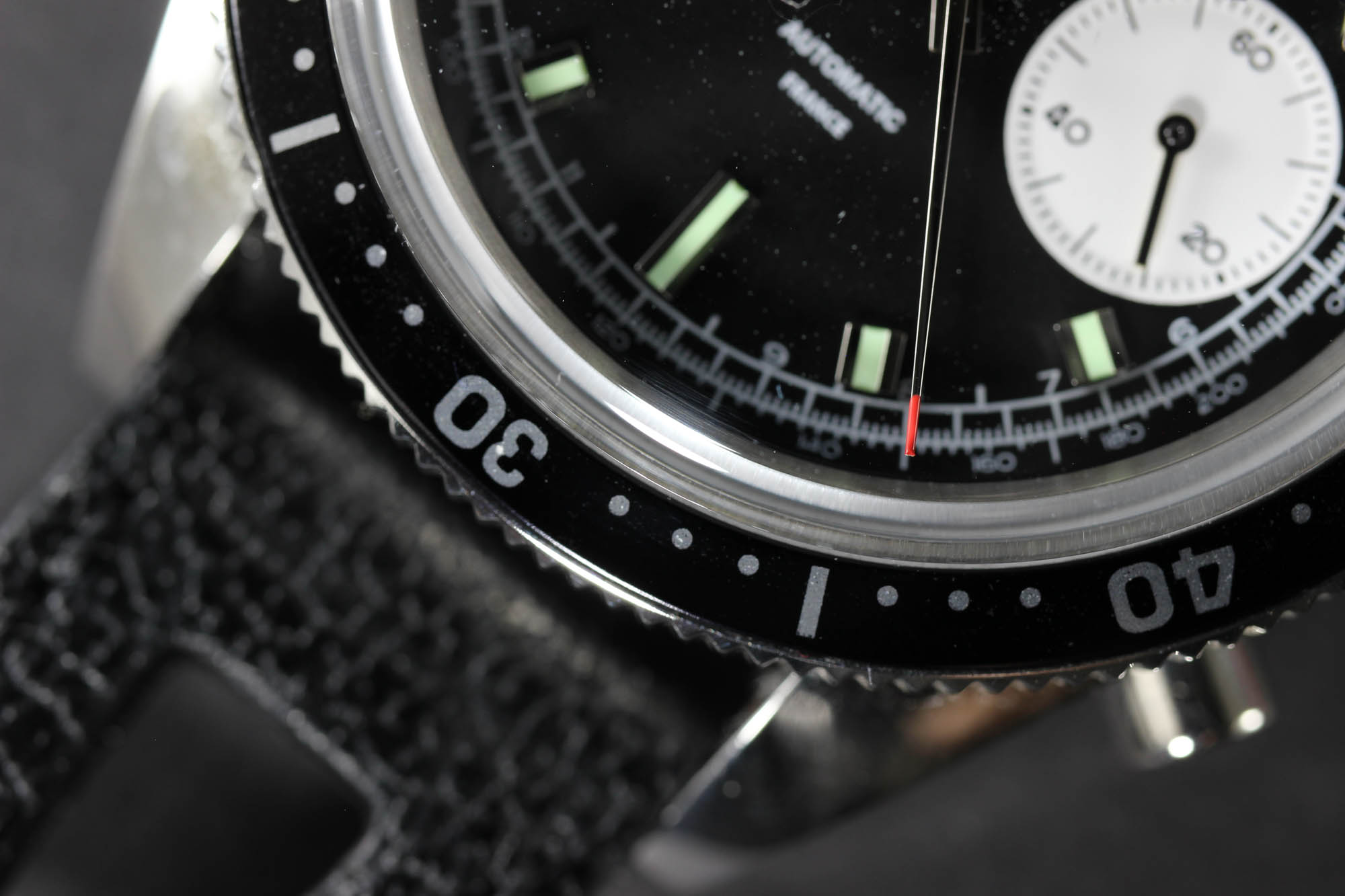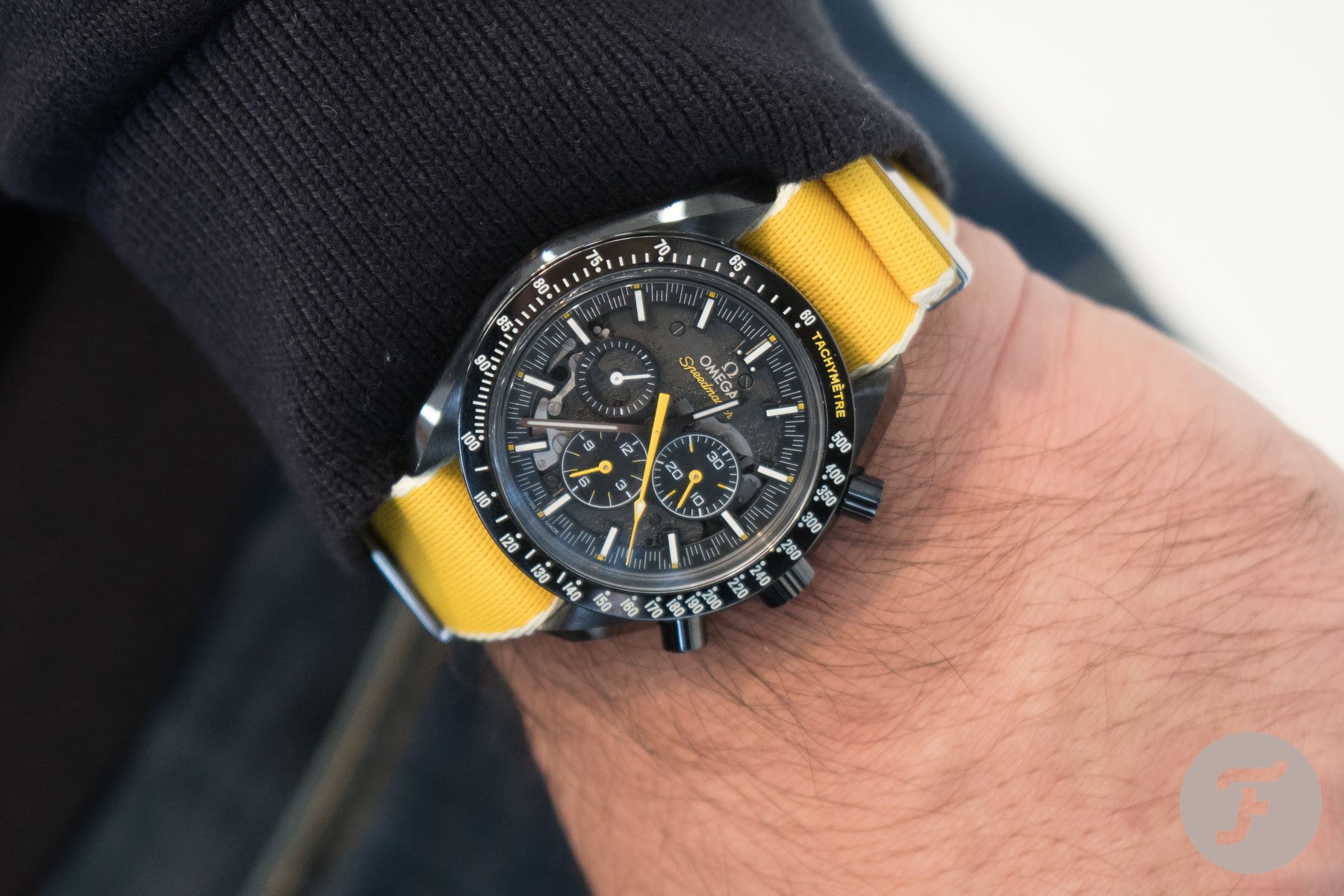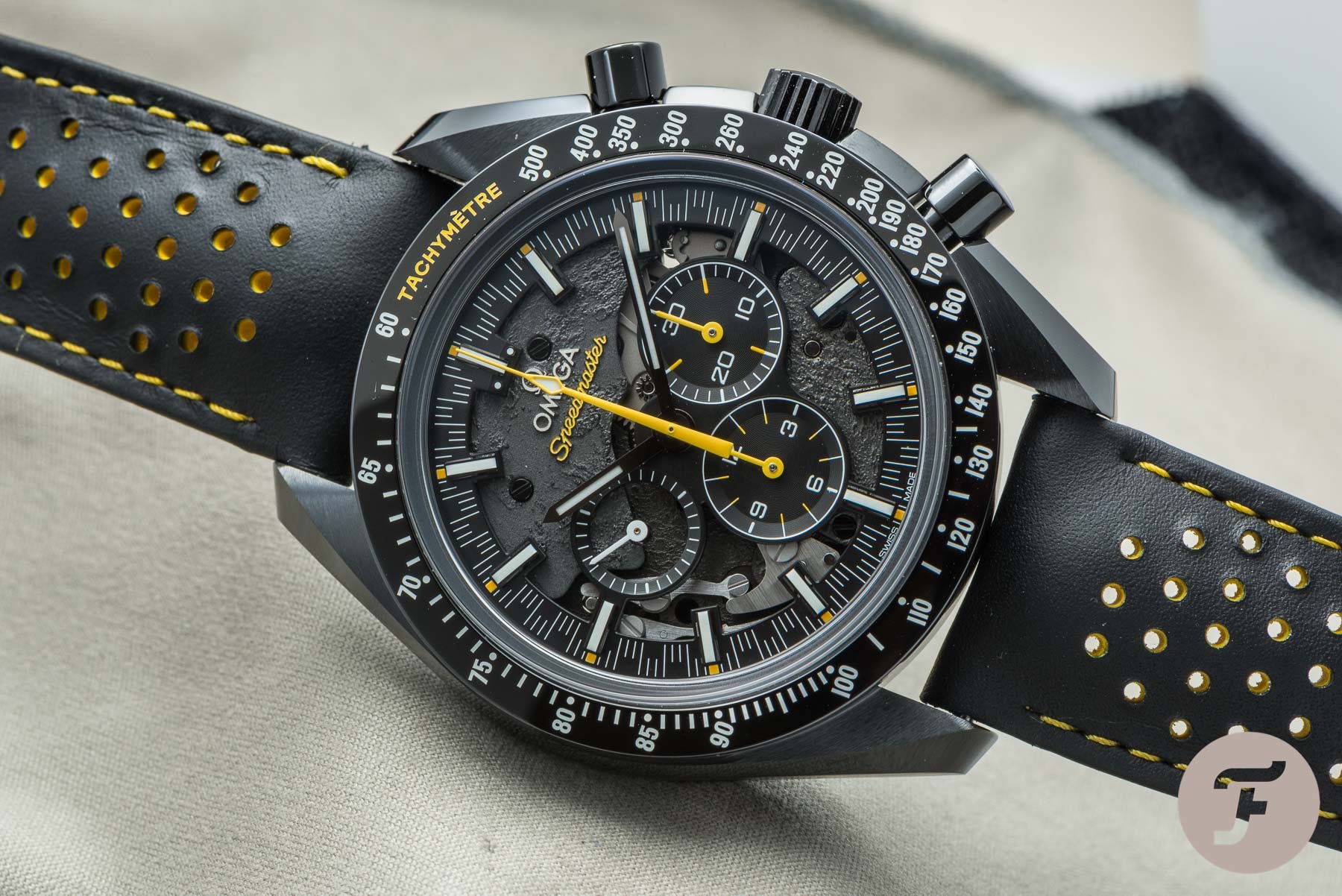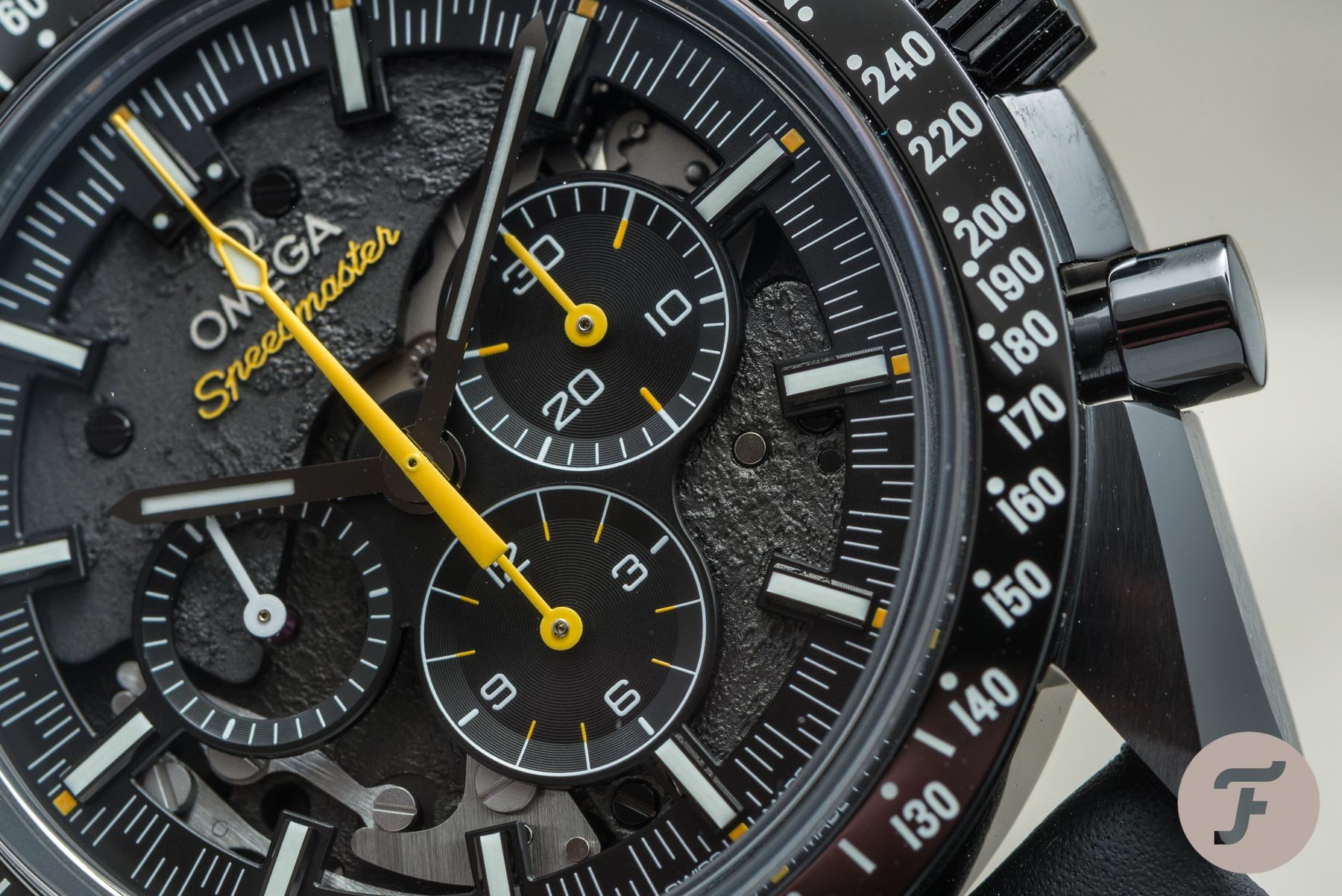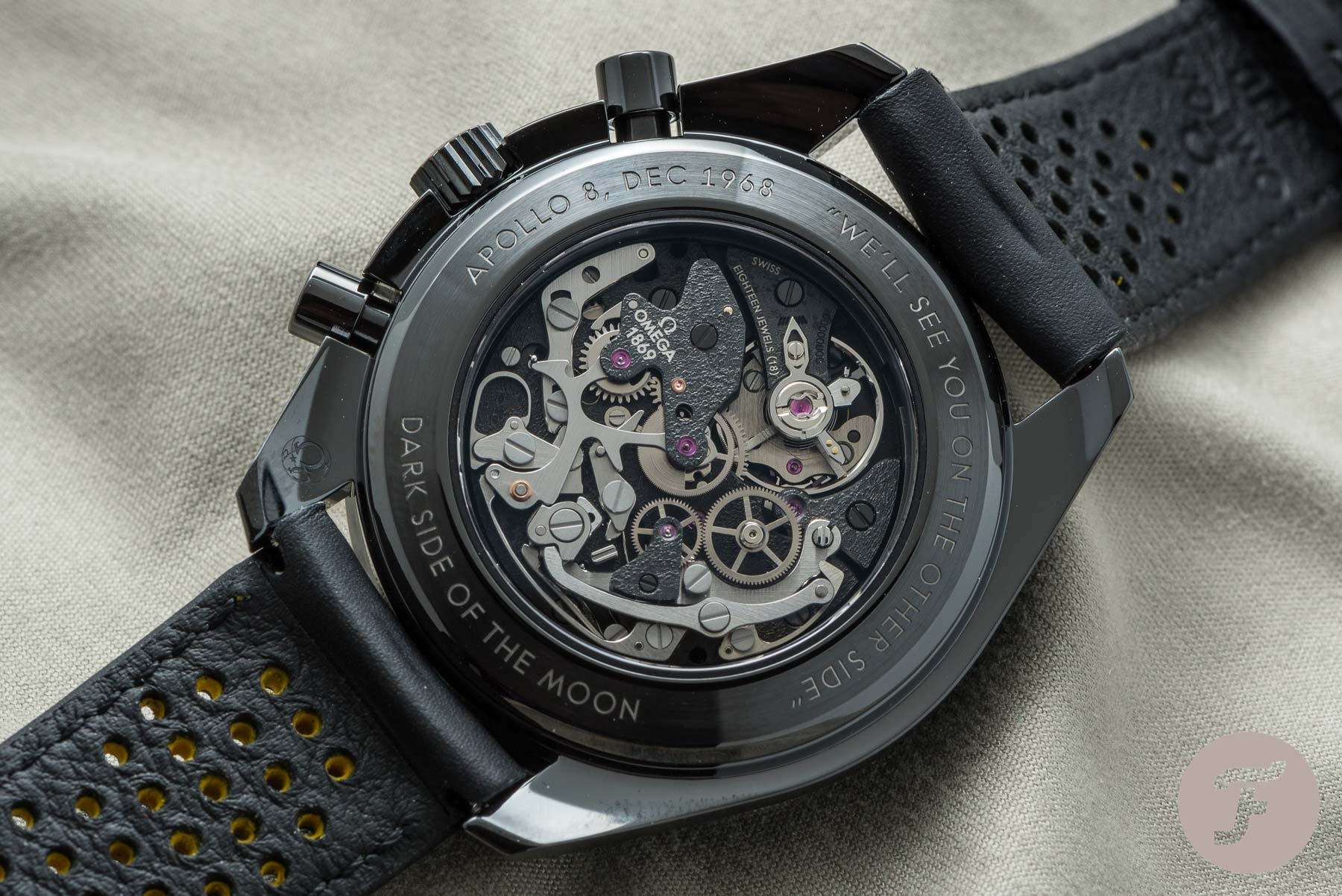The Fast And The Fratelli — Shootout Round: Tomas’s Yema Speedgraf Vs. RJ’s Omega Speedmaster Apollo 8
The final lap of the shootouts brings a lug-to-lug fight between two extremely individualistic competitors. It’s the Yema Speedgraf against the Omega Speedmaster Apollo 8, and if it wasn’t for their chronographs and tachymeter scales, it would be hard to find common ground between these two racers. Who will make it through? You decide!
The Omega Speedmaster Apollo 8 won a close race, defeating the Breitling Chronomat Frecce Tricolori. It’s going up against the Yema Speedgraf, which, surprisingly, left the legendary Yema Rallye Andretti in its rearview mirror. Betting odds are much more in favor of the Swiss Omega today, but the French Yema proved in the last round that it doesn’t give up easily. Let’s see who you send to the quarterfinals as the last one of the eight F&F speed-stars.
Tomas — Yema Speedgraf
I have to say I am excited you decided to put the Yema Speedgraf through. Honestly, I really thought that the famous Rallye Andretti would win. I was ready to build up the Yema Andretti defense against Omega when the poll started to show there were more people like me who see the undervalued beauty of the Speedgraf. So here we are! The chunky Speedgraf with a Seiko movement and a countdown bezel roars in the challenge to move to the quarterfinals over the Omega Speedmaster Apollo 8. Why is this Yema Speedgraf a better choice?
Bet on classics. Well, the Omega Speedmaster is classic enough, but not the model we’re discussing today. The Apollo 8 is quite the opposite and goes much further than it should when discussing the best racing chronograph. Yeah, it’s nice, eloquent, vibrant, and fascinating. But you want to take the black ceramic to a night bar, not a racetrack. The Omega Apollo 8 is a pure show-off watch. The Yema Speedgraf, with its decent, layered, and humble design will slowly steal your heart.
It’s such a shame we don’t have a side-by-side shot, but I am very concerned about the diameter of the Omega. Well, the bigger the watch, the better the legibility, right? If you ask me, I would rather take the Yema’s 39mm steel case with flat lugs on my wrist than a 44mm ceramic giant. But if you want to glue your Apollo 8 to the dashboard like a wall clock, go for it.
The charming choice
Another day on the wrist with the Yema Speedgraf confirmed it was a great idea to add it to my collection. It has the vibe and charm of vintage chronographs from an era long gone. Look at the wide and beefy indexes, the submerged pushers, and the screw-down crown. Before you cast your vote, forget the “Moonwatch” aura around Omega for a moment. Instead, check the artistry of the Speedgraf’s sub-register design, and really, check its price tag. Feel free to read the full review on Yema Speedgraf here and get ready to hear what RJ has to say about his preferences for the Apollo 8.
RJ — Omega Speedmaster Dark Side of the Moon Apollo 8
It’s always interesting when someone tries to talk bad about the other watch. I don’t have anything against the Yema Speedgraf. It is a cool watch, it looks great, and I can imagine it will talk to a lot of guys and girls who love vintage pieces. The price tag is interesting as well. Tomas linked to the ordering page, but I can also state it here. For €1499, that watch is a steal! You can’t even buy an entry-level Omega for that price. Those days are gone!
Apples to oranges
Comparing a €9,700 Speedmaster Dark Side of the Moon Apollo 8 to a €1,499 Yema Speedgraf is a bit tough. This competition is not about the price tags, but about the watches themselves. However, when you put these two watches next to each other, you will immediately notice the differences in quality. The finishing and build quality of the Speedmaster Apollo 8 is on another planet (no pun intended) compared to the Yema. And here’s where you can see the difference between a low-cost watch that has been produced in China and a luxury watch with a luxury price tag. There’s nothing wrong with the Yema, but I feel that with the Omega, you buy something that is built to last. It’s something you can pass on to the generations to come.
Don’t stare blind on specifications
This Speedmaster is bigger than the original Moonwatch (44.25mm versus 42mm). The interesting thing is though, that the lug-to-lug is only 1mm larger than the Moonwatch (48mm vs 47mm). And that makes the watch very wearable on the average man’s wrist as well. The hand-wound movement makes the case slightly thinner than the ones on the other Dark Side of the Moon series with an automatic movement.
It’s a bit like letting other people try my Seamaster PloProf 1200M. At first, they are a bit shocked by the dimensions of that watch. But when I ask them to try it on their wrist, they’re positively surprised by the fit. There has been not a single exception so far. The same applies to the Speedmaster Dark Side of the Moon Apollo 8. When people immediately start complaining about the size without even trying it on, it often feels like just an excuse. Or perhaps it’s a safeguard to keep them from spending too much money on watches.
Beauty on both sides
I collect Speedmasters, but my focus is mainly on the Moonwatch and pre-Moon models. While I do have my share of non-Moonwatches, like an X-33, Speedmaster 125, Speedmaster LCD, and Speedmaster Mark II, I try not to go overboard with these models. This Speedmaster Apollo 8, however, is very hard to resist, and I will definitely end up with a Dark Side of the Moon. It’ll either be the original one from 2013 or the Apollo 8 up for consideration today. It is a refreshing Speedmaster, contemporary in style, with some typical Speedmaster design elements.
Vintage-inspired and retro-design stuff — like the Yema Speedgraf — is not merely a hyped trend anymore. But I also have to admit that I am getting a bit tired of it. The Apollo 8 is, of course, based on a classic Speedmaster Professional, but it definitely has a lot of modern touches and technology onboard. Is it a watch for racing? Racing to the Moon, for sure. But it will also do just as well on the tarmac with its tachymeter scale on the bezel and easy-to-read minute track.

